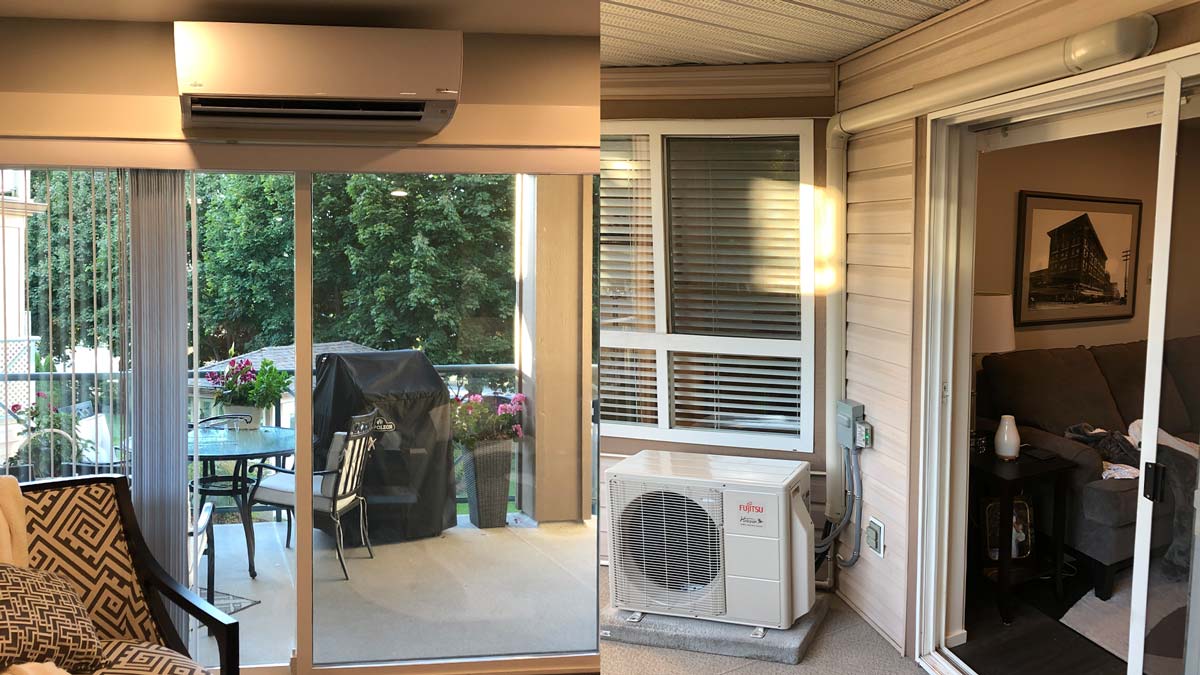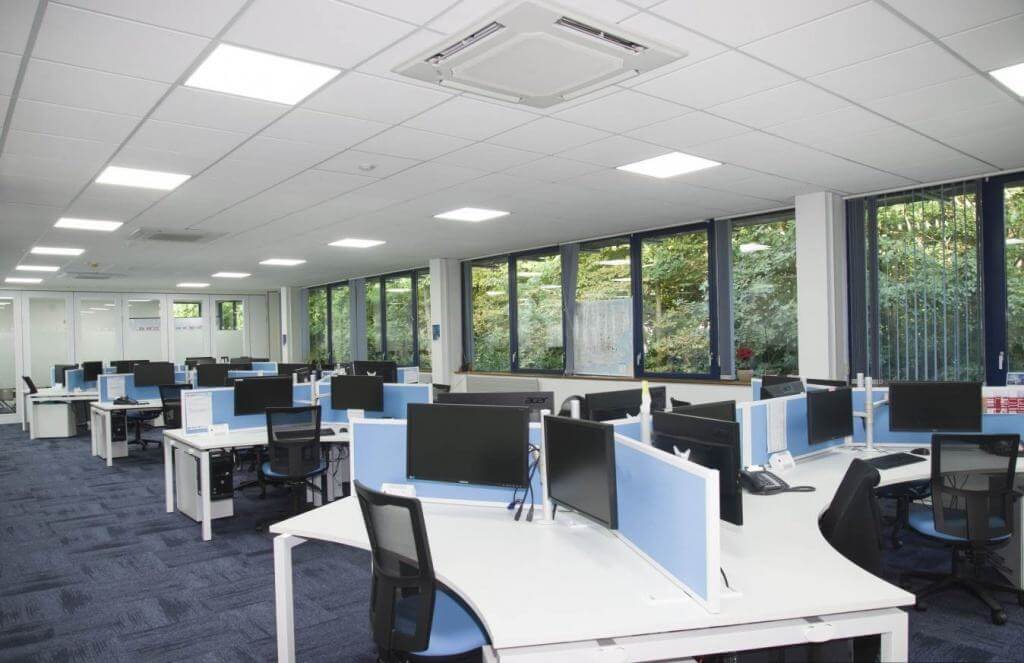Which Air Conditioner is right for your home?
When it comes to cooling your home, you have several options to choose from. Two popular choices are ductless mini-split systems and central air conditioners. Both options have their pros and cons, so it’s important to understand the differences and consider your specific needs before making a decision. In this article, we will compare ductless mini-split systems and central air conditioners, exploring their features, benefits, and considerations to help you determine which is right for your home.
Ductless Mini-Split Systems
How do Ductless Mini-Split Systems Work?
Ductless mini-split systems consist of two main components: an outdoor unit and one or more indoor units. These units are connected by refrigerant lines, eliminating the need for ductwork. The outdoor unit houses the compressor and condenser, while the indoor units blow conditioned air into the room. Each indoor unit can be controlled independently, allowing for personalized comfort in different areas of your home.
Benefits of Ductless Mini-Split Systems
Ductless mini-split systems offer several advantages.
- Firstly, their flexibility in zoning allows for customized temperature control, enhancing energy efficiency and reducing utility bills.
- Secondly, the absence of ductwork eliminates energy losses associated with traditional ducted systems.
- Additionally, ductless mini-split systems are easier to install and require minimal modifications to your home’s structure.
Central Air Conditioners
How do Central Air Conditioners Work?
Central air conditioners use a ducted system to distribute cool air throughout your home. They consist of an outdoor unit that houses the compressor and condenser, as well as an indoor unit that contains the evaporator coil and blower. The indoor unit is typically located in a central area, such as the basement or attic, and connected to ducts that deliver conditioned air to each room.
Benefits of Central Air Conditioners
Central air conditioners offer several advantages as well.
- They provide whole-house cooling, ensuring consistent comfort throughout your home.
- Central systems are also less obtrusive since the indoor unit is concealed within your home’s structure.
- Furthermore, central air conditioners can be combined with heating systems, such as furnaces, to provide year-round comfort.
Factors to Consider
Cooling Capacity and Efficiency
When comparing ductless mini-split systems and central air conditioners, it’s essential to consider their cooling capacity and efficiency. Ductless mini-split systems are ideal for cooling specific zones or individual rooms, making them more efficient for targeted cooling. On the other hand, central air conditioners are designed to cool an entire home, making them suitable for larger spaces.
Installation and Cost
Installation and cost are crucial factors to consider. Ductless mini-split systems are typically easier to install since they require no ductwork. This makes them a cost-effective option for homes without existing ducts. However, if your home already has ductwork in place, a central air conditioner may be a more affordable choice.
Both ductless mini-split systems and central air conditioners have their advantages and considerations. Ductless mini-split systems offer flexibility, energy efficiency, and zoning capabilities, while central air conditioners provide whole-house cooling and can be combined with existing heating systems. The choice between the two ultimately depends on your specific needs, home layout, and budget.
Choosing between a ductless mini-split system and a central air conditioner depends on your specific preferences and circumstances. Consider factors such as cooling capacity, installation requirements, cost, and energy efficiency. If you’re still unsure, it’s best to consult with professionals like Pickaboo, who can guide you through the decision-making process and provide expert advice on the most suitable cooling solution for your home.
FAQs (Frequently Asked Questions):
-
Which is more energy-efficient: a ductless mini-split or a central air conditioner?
Both ductless mini-split systems and central air conditioners can be energy-efficient, but the efficiency depends on various factors such as the specific models, the size of your home, and how well the system is maintained. Generally, ductless mini-split systems tend to be more energy-efficient because they allow for zone cooling, which means you can cool only the areas you need, avoiding unnecessary energy consumption.
-
Can I install a ductless mini-split system in my existing home with ductwork?
Yes, you can install a ductless mini-split system in an existing home with ductwork. Ductless mini-split systems are designed as a ductless alternative, but they can also be used to supplement or replace existing ducted systems. This provides an opportunity to have zoned cooling in certain areas while still utilizing the existing ductwork for other parts of the house.
-
Do ductless mini-split systems require regular maintenance?
Yes, like any other cooling or heating system, ductless mini-split systems require regular maintenance to ensure optimal performance and longevity. It is recommended to clean or replace air filters regularly, check and clean the outdoor unit, inspect the refrigerant lines for leaks, and schedule professional maintenance at least once a year.
-
How long do ductless mini-split systems and central air conditioners typically last?
On average, both ductless mini-split systems and central air conditioners can last for 10 to 15 years, depending on factors such as usage, maintenance, and overall system quality. Regular maintenance and timely repairs can help extend the lifespan of your cooling system.
-
Are ductless mini-split systems quieter than central air conditioners?
Ductless mini-split systems tend to be quieter than central air conditioners. The indoor units of ductless systems are usually designed to operate quietly, with sound levels ranging from 19 to 40 decibels, depending on the model. Central air conditioners, on the other hand, can produce more noise due to the operation of the blower and the ductwork.
-
Can I control each indoor unit of a ductless mini-split system independently?
Yes, one of the significant advantages of ductless mini-split systems is the ability to control each indoor unit independently. Each indoor unit has its own thermostat, allowing you to set different temperatures and customize the cooling in each zone or room according to individual preferences.
-
Do central air conditioners require professional installation?
Yes, central air conditioners typically require professional installation. The installation process involves proper sizing, ductwork evaluation, electrical connections, and refrigerant handling, which are best handled by trained HVAC professionals to ensure safe and efficient operation.
-
Can a ductless mini-split system provide both heating and cooling?
Yes, many ductless mini-split systems are designed to provide both heating and cooling. These systems utilize heat pump technology, allowing them to reverse the cooling process and provide warmth during colder months. They can efficiently heat your home by extracting heat from the outdoor air, even in temperatures as low as -15 degrees Celsius (5 degrees Fahrenheit).
-
Do ductless mini-split systems and central air conditioners come with warranties?
Yes, both ductless mini-split systems and central air conditioners come with warranties from the manufacturers. The duration and coverage of the warranty can vary depending on the brand and model. It is essential to review the warranty terms and conditions before making a purchase and consider extended warranty options for added peace of mind.









